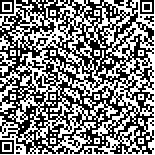| 摘要: |
| 地下空间作为城市开发的重要方向,
其环境对人的行为心理的影响是评价城市地
下空间质量的重要因素之一。本文通过对国
内现有地下空间环境对人的行为心理影响研
究的文献分析,探讨该领域的研究进展。首
先,结合文献数量及城市发展背景,梳理研
究历程并划分为三个发展阶段;继而结合建
筑空间设计与环境心理学视角,讨论现有研
究中的主要路径与手段;随后对空间环境影
响要素进行梳理,根据需求层次理论构建影
响行人行为心理的地下空间环境要素体系,
包含生理需求、安全需求、行为需求与情感
需求。最后总结当前地下空间环境对人的行
为心理影响这一研究领域中存在的研究对象单一、研究理论与设计实践脱节等问题,提出针对长期停留人员影响特性研究、视角多元化交
叉研究等未来的研究方向,并对建成后的地下空间环境评价进行反馈与长期监控,为今后地下
空间环境的设计、研究提出建议。 |
| 关键词: 地下空间 环境 行为心理 研究方法 影响要素 |
| DOI:10.13791/j.cnki.hsfwest.20200408 |
| 分类号: |
| 基金项目:国家自然科学基金面上项目(51778384) |
|
| Influence of Underground Space Environments on Human Behavior and Psychology:Research Progress in China |
|
MAO Yuanyuan,LI Wenchao,ZHU Mengmeng,DING Jiajun,ZENG Minling
|
| Abstract: |
| The influence of underground space environment on human behavior and
psychology is an important factor to evaluate the environmental quality of urban
underground space which has become a significant direction of urban development. Based
on the literature review of the influence of underground space environment on people’s
behavior and psychology, this article studies the research progress in this field.
Firstly, this article combs the current research progress of the influence of underground
space on people’s behavior and psychology in China. The development of this field shows
a growth with rapid speed. The development of researches in this field can be divided into
three stages: exploratory stage, slow growth stage and rapid growth stage. Its development
characteristics are as follows: research type transfers from single function to multiple function;
research content changes from material space environment to pedestrian space cognition;
research perspective is not limited to architectural science, and interdisciplinary perspectives
including environmental psychology, ergonomics and cognitive physiology will become an
important trend in the future development of this field.
Then the focuses and methods in these studies are analyzed in terms of architectural
space design and environmental psychology as well as the predominant approaches. Most of
the researches are qualitative, while the rest are quantitative. And there are three research
approaches that are used most frequently in quantitative researches, namely factor extraction
approach, behavior simulation approach and environmental psychological correlation analysis
approach. Studies using different technical approaches focus on different research objects and
discuss the interaction between environment and behavior psychology from the perspective
of environment or user’s behavior. These three types of research approaches are used to find
suitable design for underground space environment with high quality. The multi-disciplinary
cooperation promotes the complementarity of research methods. With the progress of scientific
methods and technologies, the applications of new methods and technologies in this field are increasing gradually, such as computer simulation which makes the research results more scientific, reliable and predictable.
Additionally, according to the Hierarchy of Needs, this article combs the environmental factors in the underground space affecting users’
psychology and classifies the relevant influencing factors into four categories of users’ needs, including physiological needs, safety needs,
behavioral needs, and emotional ones, in order to construct the psychological demand system for underground space use. 1) The main factors
of physiological needs are the physical environment factors of underground space, including light, air, sound and so on. 2) Safety needs refer to
those to eliminate the insecurity, tension and fear caused by the relatively closed environment when people are in underground space, including
space identification factors and disaster prevention factors. 3) Behavior needs are the intermediate demand in users’ needs level. It needs to
satisfy people’s different experiences by providing recreation, shopping and other functions, in order to solve the problem of monotonous
underground environment space. 4) Emotional needs belong to high-level ones, including personalized artificial environment and natural
landscape environment, which can promote the quality of underground space environment and have a positive impact on human psychology.
Through sorting out the research results of different levels of psychological needs, this article explores the specific technical requirements of
underground space design, and makes a summary and provides some suggestions for the future development direction of various needs research.
Finally, summaries of current problems and potential study directions in this area are provided as well as some suggestions for underground
space environment design and research in the future. The studies in this field can be expanded and strengthened in the following aspects: 1)
expanding quantitative research, 2) diversifying research objects, 3) strengthening interdisciplinary research, 4) combining research theory with
design practice. This article provides suggestions on improving the quality of underground space design in the future. |
| Key words: Underground Space Environment Psychology Research Methods Influencing Factors |


